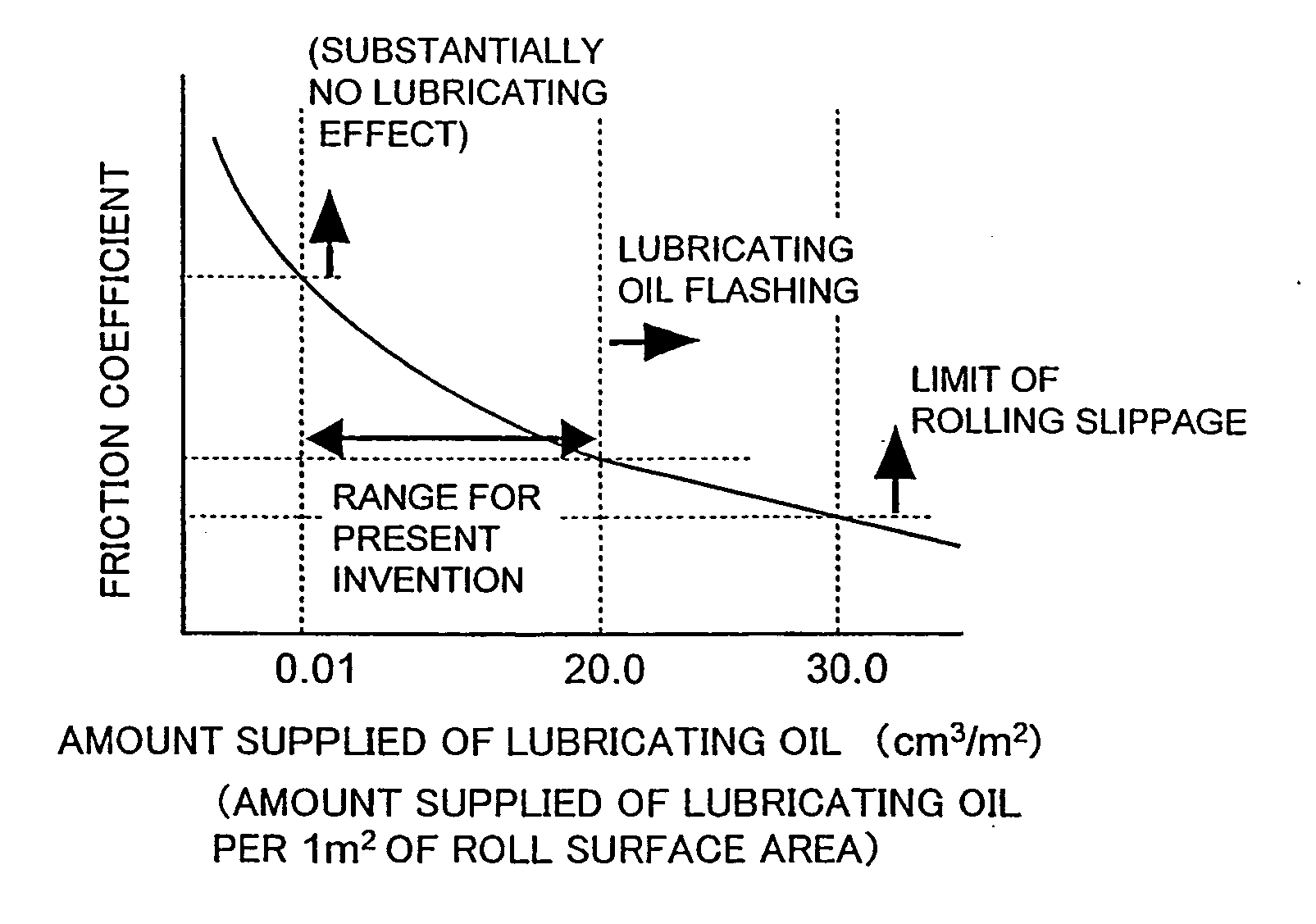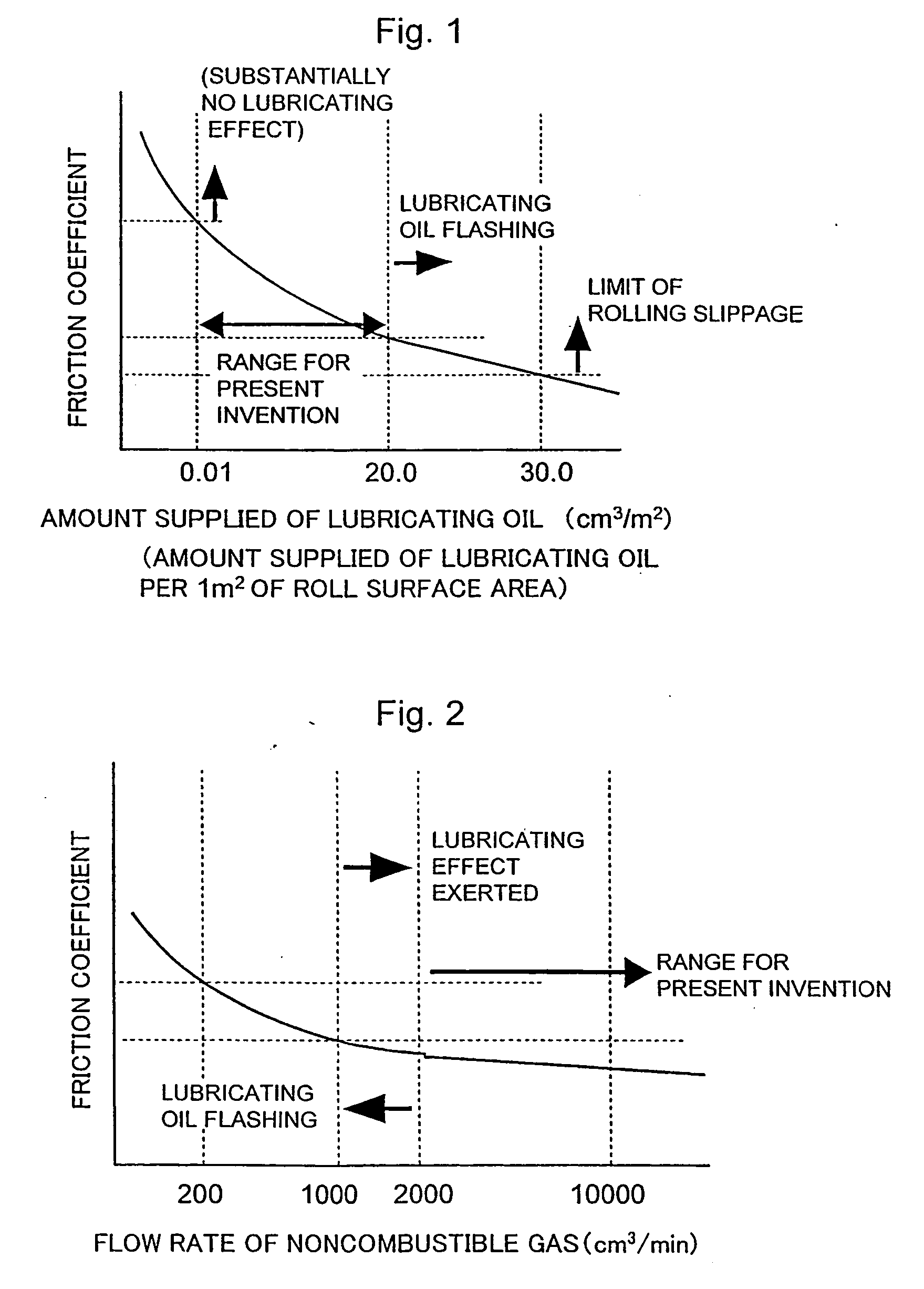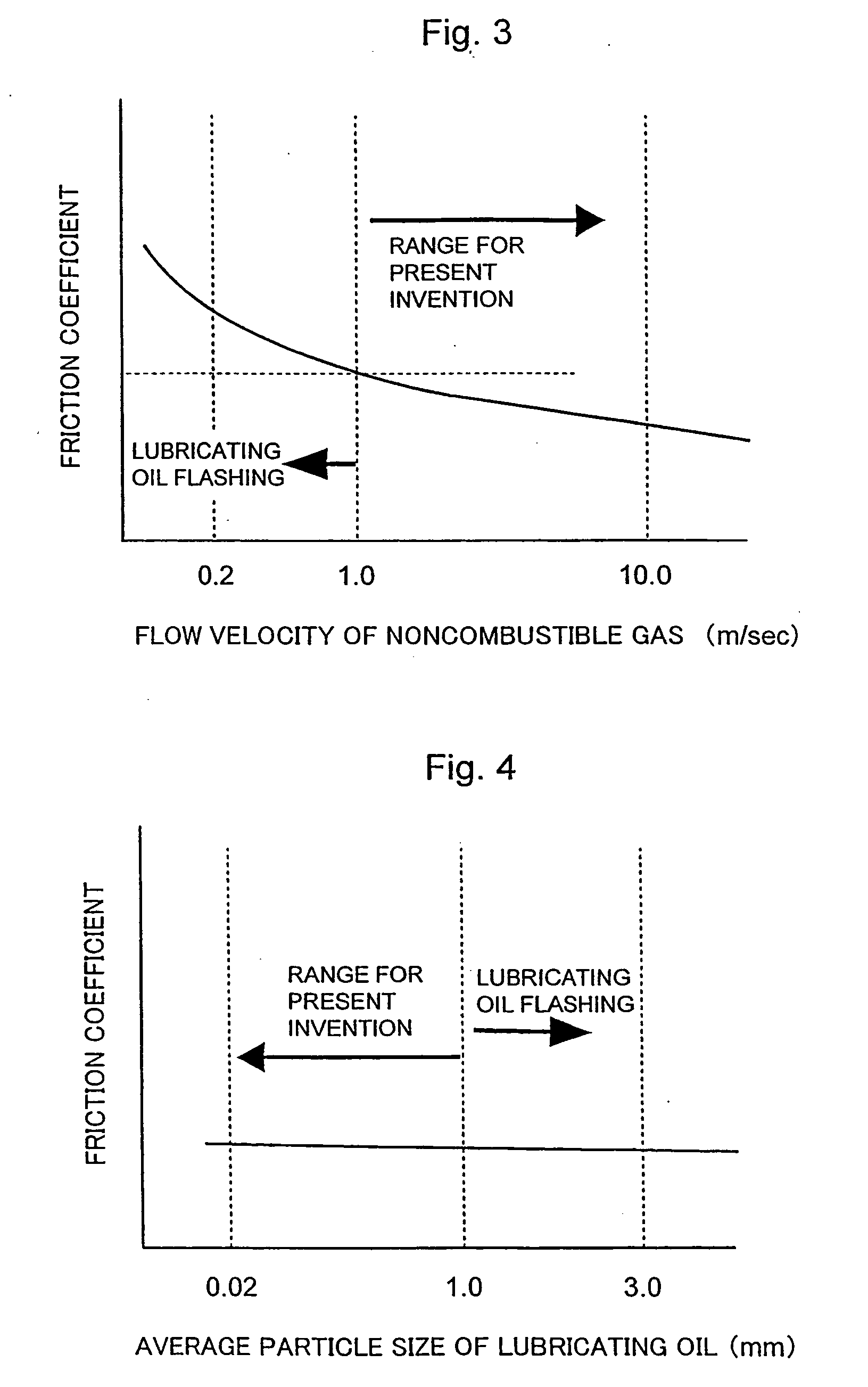Lubricated hot rolling method
a hot rolling method and lubricating oil technology, applied in the direction of lubricant composition, manufacturing tools, profile control devices, etc., can solve the problems of deterioration of manufacturing efficiency, lubricating oil supplied in the form of emulsified lubrication may become not easily adhesionable to the rolls, and possible slippage and rolling slippag
- Summary
- Abstract
- Description
- Claims
- Application Information
AI Technical Summary
Benefits of technology
Problems solved by technology
Method used
Image
Examples
first exemplary embodiment
[0042] A controlling effect of generation of a mill scale of rolls according to the present invention is reviewed, and and a determination is made as to whether flashing phenomenon occurs or not during experiments, e.g., by using a hot rolling friction testing machine.
[0043] Experimental piece: diameter 80 mm, width 10 mm, [0044] made of an HSS roll material
[0045] Counterpart piece: diameter 165 mm, width 15 mm, [0046] made of S45C
[0047] Load: 30 kgf
[0048] Rotational speed of experimental piece: 176 m / min
[0049] Speed of counterpart piece: 185 m / min
[0050] Temperature of friction surface of experimental piece: 650° C.
[0051] Temperature of friction surface of counterpart piece: 880° C.
Exemplary Lubricating Oil:
[0052] (a) A lubricating oil in which 15 vol % of calcium sulfonate having a basicity of 300 mgKOH / g is blended in a mineral oil, and whose viscosity at 40° C. is 110 cSt.
[0053] (b) A lubricating oil in which 15 vol % of a colza oil is blended in a mineral oil and whos...
second exemplary embodiment
[0064] It is possible to use a 2Hi rolling mill (2-high mill) to examine a lowering effect of friction coefficient serving as a representative indicator of the lubricating performance when the lubricating-oil-supplying conditions were changed, and at the same time examined, by a rolling experiment, a marginal condition of occurrence of ignition. In this exemplary experiment, base conditions in accordance with the exemplary embodiment of the present invention with respect to four kinds of supply conditions were provided, and on the basis thereof, a lowering effect of the friction coefficient and occurrence of an ignition phenomenon were investigated by changing each condition of the four kinds of conditions separately.
[0065] Roll: diameter 400 mm, HSS roll, roll length 100 mm
[0066] Material to be rolled: 0.02% carbon steel, thickness 1 mm×width 50 mm×length 1000 m (coil)
[0067] Heating temperature: 1000° C. (nitrogen atmosphere)
[0068] Rolling speed: 50 m / min
[0069] Roll gap: 20% t...
PUM
| Property | Measurement | Unit |
|---|---|---|
| flow velocity | aaaaa | aaaaa |
| size | aaaaa | aaaaa |
| particulate size | aaaaa | aaaaa |
Abstract
Description
Claims
Application Information
 Login to view more
Login to view more - R&D Engineer
- R&D Manager
- IP Professional
- Industry Leading Data Capabilities
- Powerful AI technology
- Patent DNA Extraction
Browse by: Latest US Patents, China's latest patents, Technical Efficacy Thesaurus, Application Domain, Technology Topic.
© 2024 PatSnap. All rights reserved.Legal|Privacy policy|Modern Slavery Act Transparency Statement|Sitemap



